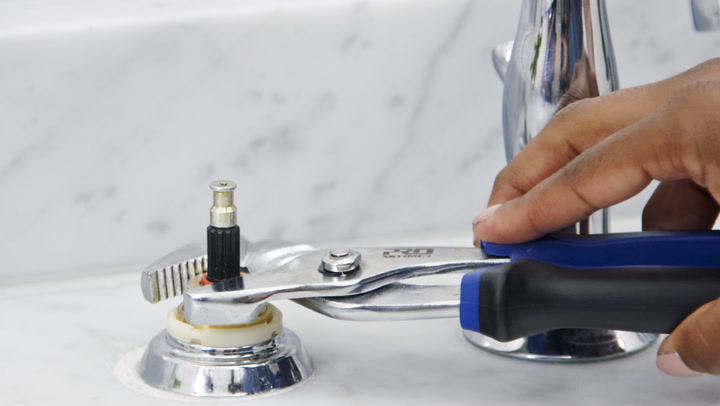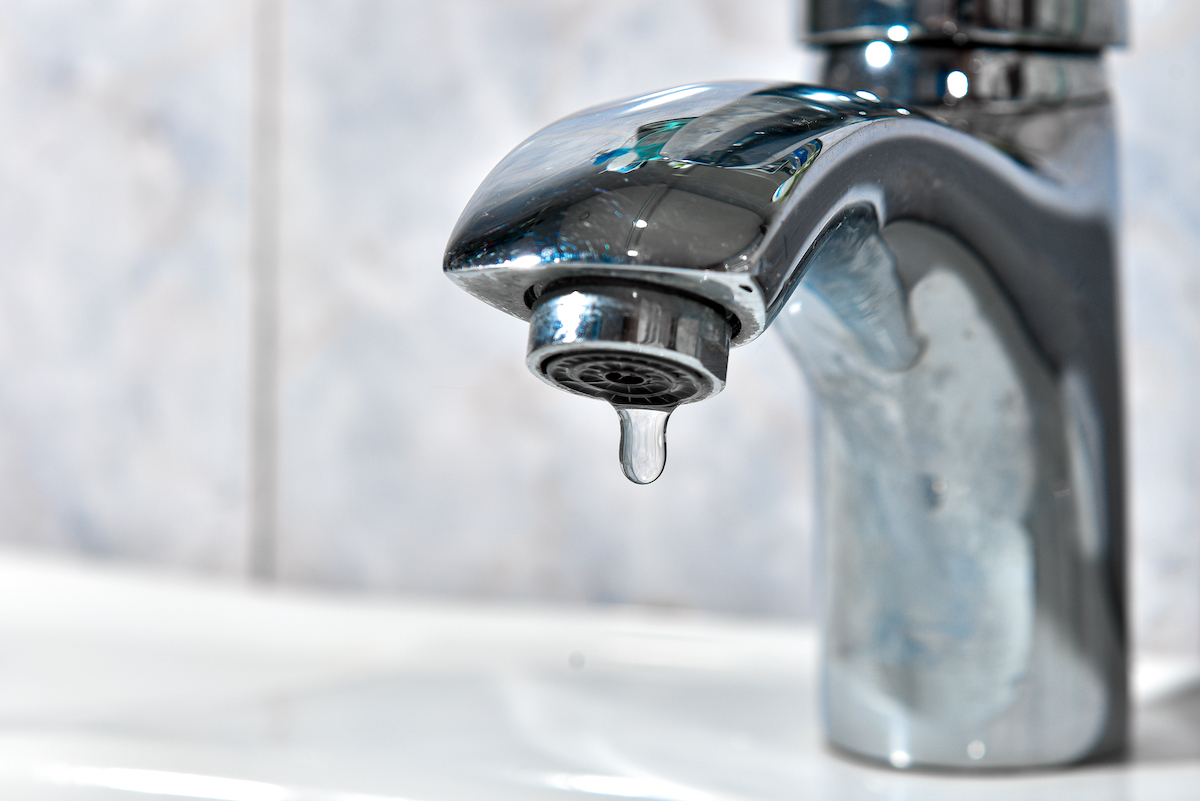Why It's Needed to Correct a Broken Faucet
Why It's Needed to Correct a Broken Faucet
Blog Article
We've noticed this great article on How to Fix a Dripping or Leaky Faucet below on the web and believe it made perfect sense to discuss it with you in this article.

Trickling faucets might feel like a small inconvenience, but their impact exceeds just the nuisance of the noise. From drainage to sustaining unnecessary monetary expenses and health and wellness dangers, disregarding a leaking faucet can cause different consequences. In this article, we'll explore why it's vital to address this common house concern immediately and efficiently.
Wastage of Water
Ecological Effect
Leaking faucets add significantly to water wastage. According to the Epa (EPA), a solitary faucet trickling at one drip per second can waste greater than 3,000 gallons of water per year. This not just strains water sources however also impacts communities and wild animals dependent on them.
Step-by-Step Guide to Dealing With a Dripping Faucet
Devices Needed
Prior to attempting to deal with a dripping tap, collect the required devices, consisting of a flexible wrench, screwdrivers, substitute parts (such as washers or cartridges), and plumber's tape.
Typical Tap Issues and Their Solutions
Identify the type of faucet and the particular problem creating the drip. Usual troubles consist of damaged washing machines, corroded valve seats, or malfunctioning O-rings. Describe maker guidelines or on-line tutorials for detailed support on fixings.
Financial Prices
Boosted Water Expenses
Beyond the environmental impact, trickling taps can inflate water costs significantly. The collected wastage over time converts right into higher energy expenditures, which could have been avoided with prompt repair work.
Potential Residential Or Commercial Property Damages
Additionally, prolonged dripping can bring about harm to fixtures and surface areas surrounding the tap. Water accumulation can trigger staining, rust, and also structural concerns if left unattended, leading to added fixing costs.
Health and wellness Problems
Mold and Mold Development
The constant existence of wetness from a trickling tap produces an excellent environment for mold and mold development. These fungis not just compromise indoor air high quality however additionally posture health risks, particularly for individuals with respiratory problems or allergies.
Waterborne Conditions
Stagnant water in dripping taps can become a breeding ground for bacteria and other pathogens, enhancing the risk of waterborne diseases. Contaminants such as Legionella microorganisms grow in stationary water, potentially resulting in major illnesses when consumed or breathed in.
Do it yourself vs. Professional Repair
Advantages and disadvantages of DIY Fixing
While some may try to take care of a dripping tap themselves, DIY fixings come with their very own set of difficulties. Without proper understanding and tools, do it yourself attempts can aggravate the issue or cause incomplete repair services, prolonging the issue.
Advantages of Hiring an Expert Plumber
Working with a professional plumber guarantees that the underlying source of the dripping faucet is attended to properly. Plumbers have the proficiency and equipment to diagnose and repair faucet problems effectively, conserving time and decreasing the threat of more damages.
Ecological Duty
Specific Payment to Preservation
Taking obligation for dealing with trickling taps lines up with broader efforts towards water preservation and environmental sustainability. Every person's actions jointly make a considerable impact on preserving priceless resources.
Lasting Living Practices
By prioritizing prompt fixings and taking on water-saving behaviors, individuals add to sustainable living techniques that benefit both existing and future generations.
Preventive Measures
Normal Upkeep Tips
To prevent trickling faucets, do routine maintenance such as cleansing aerators, examining for leakages, and changing worn-out parts without delay. Additionally, take into consideration mounting water-saving gadgets or updating to more effective components.
Relevance of Prompt Repairs
Dealing with leaking taps as quickly as they're observed prevents more water wastefulness and potential damage, eventually conserving both water and money in the future.
Influence On Home Value
Perception of Well-Maintained Property
Maintaining a residential or commercial property in good condition, including resolving maintenance issues like trickling faucets, boosts its viewed worth and charm among prospective buyers or renters.
Influence on Resale Worth
Qualities with well-maintained plumbing components, consisting of faucets, command greater resale worths in the realty market. Resolving dripping faucets can add to a favorable impression during building evaluations and arrangements.
Conclusion
Attending to a dripping faucet surpasses mere comfort; it's an essential step towards preserving water, decreasing monetary prices, and safeguarding wellness and property. Whether with DIY fixings or specialist assistance, taking action to repair leaking taps is a little yet impactful method to advertise accountable stewardship of sources and add to a healthier, a lot more lasting future.
Most Common Reasons for a Leaky Faucet and How to Stop the Drip
Whether it’s your kitchen faucet leaking or a bathroom faucet leaking, one leaky faucet can waste anywhere from three to 30 gallons of water every single day. If the constant drip-drip-drip doesn’t get your attention, your water bill will. The good news is that, by following a few simple steps, chances are pretty good you can fix the problem yourself.
Why is it dripping?
Before you start taking things apart, let’s break down some of the most common causes of a leaky faucet.
Bad O-ring.
A cartridge is a valve that controls the flow of water into the faucet spout. On cartridge faucets there’s an O-ring—the little disc attached to the stem screw that holds the faucet handle in place. If it’s loose or worn-out, it can cause your sink handle to leak. Of course, the cartridge itself could be worn out. If that’s the case, make sure you replace it with the exact same kind.
Corroded valve seat.
The valve seat connects the faucet and the spout. If the leak seems to be coming from the spout, it might be because a buildup of water sediment has corroded the valve seat.
Worn-out washers or seals.
A leaky spout could be caused by a bad washer that rests against the valve seat. It’s just a matter of time before friction takes its toll. It could also be the wrong size washer or one that’s been installed incorrectly. Water sediments can also corrode inlet and outlet seals.
Water pressure.
If the faucet only drips now and then, or when you turn the handles a certain way, you should probably check your home’s water pressure.
Loose or broken parts.
The adjusting ring and packing nuts in the stream screw can become loose over time, causing your sink handle to leak. Try tightening or replacing the packing nut. If the leak is coming from the pipes underneath the sink, you probably have a broken pipe or fitting. If that’s the case, you should definitely call a plumber.
Know your faucet.
Faucets come in a variety of types. Each one has its own assembly—and its own possible causes of leaks. Learning about the four most common kinds of faucets will help you know how to take them apart and make any repairs.
How to stop a leaky faucet
Fixing that leaky faucet doesn’t have to take a lot of time, money, or expertise. It’s usually a simple matter of replacing a worn-out washer or gasket, a loose O ring, or another part. Chances are really good you can do this yourself if you follow these simple steps.
Shut off the water.
Before you tackle the faucet, cut off the water supply to the sink. There should be one valve for hot and one for cold. Hand-turn them clockwise with your hands till they close. If there are no valves under the sink, head to the basement and shut off the main water supply to the house. Then turn on the faucet until it empties out the water that’s still in the line and you’re ready to start. It’s a good idea to cover the sink drain with a plug or a rag so you don’t lose any small pieces and parts while you’re working.

Do you appreciate reading up on 4 Common Reasons for a Leaky Faucet? Place feedback down below. We will be glad to listen to your opinions about this review. We hope that you come back again soon. Don't hesitate to take the opportunity to promote this blog if you enjoyed it. Thank you for going through it.
Report this page